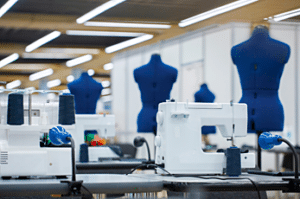In the ever-evolving landscape of the fashion industry, technology has emerged as a transformative force, revolutionizing every facet from design to retail and consumer engagement. Gone are the days when fashion was solely dictated by the hands of skilled artisans and designers; today, digital innovation plays a pivotal role in shaping trends, optimizing production processes, and enhancing the overall fashion experience. The fusion of technology and fashion has birthed a new era where 3D printing breathes life into intricate designs, artificial intelligence analyzes consumer preferences for more accurate predictions, virtual reality transports shoppers into immersive digital showrooms, and sustainable practices are empowered by data-driven insights. From the runways to online platforms, technology’s influence is not only evident in the aesthetics of garments but also in how brands connect with their audiences, democratizing access and redefining the concept of personal style. This synergy between fashion and technology not only underscores the industry’s adaptability but also reflects a future where creativity knows no bounds and innovation continues to be at the heart of a dynamically changing fashion landscape.

The Impact of Technology on the Fashion Industry :
-
Digital Design and Prototyping : Technology has brought a paradigm shift in the design process. Designers now utilize sophisticated computer-aided design (CAD) software that allows them to create intricate and precise designs digitally. These tools facilitate the exploration of diverse patterns, textures, and color combinations, enabling designers to experiment more freely and iterate rapidly. Moreover, the introduction of 3D modeling software has revolutionized prototyping. Designers can create lifelike garment simulations, allowing them to visualize how a design will look and fit before even creating a physical prototype. This reduces costs, speeds up the design process, and minimizes material waste.
-
Sustainable Innovations : With growing awareness of environmental concerns, technology has become a key driver of sustainable practices in the fashion industry. Innovations in material science have led to the development of eco-friendly fabrics, such as those derived from agricultural waste, mushroom mycelium, or ocean plastics. Additionally, cutting-edge dyeing techniques are reducing water and chemical usage. Biotechnology is enabling the production of leather and silk without animal involvement. These advancements not only reduce the industry’s ecological footprint but also cater to the increasing demand for ethically-produced and environmentally-conscious fashion.
-
Data-Driven Insights : The integration of data analytics and artificial intelligence is reshaping how fashion brands understand and engage with consumers. By analyzing vast amounts of data from social media, e-commerce, and customer behavior, AI can identify emerging trends and consumer preferences in real time. Brands can make informed decisions on what styles to produce, which colors are in demand, and how to tailor their marketing strategies. This minimizes the risk of overproduction and helps create more targeted, relevant collections that resonate with consumers, ultimately reducing waste and enhancing customer satisfaction.
-
Virtual and Augmented Reality : The fusion of fashion and virtual reality (VR) and augmented reality (AR) technologies is changing the way consumers interact with brands and products. AR apps allow customers to virtually try on clothes using their smartphones, overcoming the limitations of online shopping and reducing return rates. Virtual fashion shows and showrooms offer immersive experiences, where audiences can explore collections and even attend runway events from the comfort of their homes. These technologies democratize access to fashion events, allowing global audiences to engage in real-time, without geographical constraints.
-
E-Commerce and Personalization : Technology has redefined the online shopping experience by tailoring it to individual preferences. AI algorithms analyze browsing and purchase history to recommend products that align with customers’ tastes. Virtual try-on tools use AR to superimpose clothing onto a user’s image, helping them visualize how an item will look and fit before purchasing. This boosts confidence in online shopping decisions and bridges the gap between brick-and-mortar and digital experiences, enhancing customer satisfaction and loyalty.
-
Supply Chain Optimization : Transparency and accountability in the fashion supply chain are being revolutionized by technology, particularly through blockchain. This decentralized digital ledger enables brands to trace the entire journey of materials, ensuring ethical sourcing and authenticity. It reduces the risk of counterfeiting and verifies the origin of luxury goods, which is crucial for maintaining brand reputation and consumer trust. Additionally, supply chain management software optimizes production processes, minimizes delays, and enhances collaboration between different stages of the supply chain.
-
Innovative Manufacturing : Technology-driven manufacturing techniques like 3D printing are revolutionizing the production of garments. This additive manufacturing method enables intricate designs that were previously challenging to create through traditional methods. Moreover, 3D printing allows for on-demand manufacturing, reducing overproduction and wastage. Customization becomes more feasible, as items can be tailored to individual measurements and preferences. This shift towards innovative manufacturing aligns with sustainable practices and responds to the growing demand for unique, personalized fashion pieces.
Read More – Steps to Speed Up Your WordPress Website
Bottom line:
To encapsulate, the profound integration of technology within the fashion industry is catalyzing a sweeping transformation that transcends mere aesthetics, fundamentally altering how fashion is conceived, produced, consumed, and experienced. Through an intricate web of 3D modeling, data analytics, virtual reality, and sustainable breakthroughs, technology is forging an unprecedented synergy between creativity and efficiency, ushering in an era where personal style is more dynamic, production is more streamlined, and the fashion narrative is intertwined with the latest advancements. As innovation continues to propel fashion forward, it becomes evident that technology’s enduring influence is not only revolutionizing an industry, but also shaping an intricate tapestry that binds design, technology, and consumer culture inextricably together.









